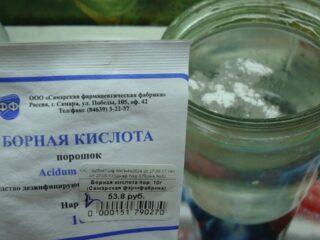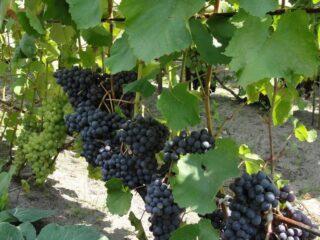Content
Pinot Noir grapes are a famous French variety that has been cultivated for more than six centuries. In Russia, it is traditionally cultivated in the Krasnodar Territory and other southern regions. It is also possible to grow in the middle zone. The variety is characterized by high winter hardiness, but is quite demanding in terms of care.
History of origin
Pinot Noir is a variety of grapes from the famous French varietal group Pinot. The variety was obtained in the Burgundy region, this happened in the 14th century or earlier. The name "Pinot" translates as "pine". This is because Pinot Noir grapes actually resemble a pine cone.
This is a technical variety that is mainly used for wine production. In Russia it is grown in the Krasnodar region. The culture is quite capricious and difficult to take root in a new place.Therefore, initially a small area is laid out for planting, and then gradually expanded to the required size. The crop is not included in the register of Russian breeding achievements.
Description of Pinot Noir grapes
Pinot Noir grapes produce bushes of medium height. The leaves are round, small in size, the surface is highly wrinkled, and there are open cutouts on the sides. The middle blade is wide. The degree of dissection varies - there are three or five blades. On the underside, a slight pubescence in the form of a white “cobweb” is noticeable. The flowers are bisexual, so pollination is close to 100%.
Bunches
The clusters are medium or small in size, reaching from 7 to 14 cm in length and 5-8 cm in width. The shape is classic cylindrical, less often with blades. The density is very high. The comb is lignified, short in length (3-4 cm). The average weight of the bunches is 60-120 g.
Berries
The berries are medium in size, round or partly oval in shape, sometimes deformed. Pinot Noir grapes have a rich blue or dark color: there are no white berries. The average weight is 1.5 g. Each berry contains 2-3 seeds.
The pulp is very juicy - the mass fraction of juice is at least 75%. The consistency is pleasant, not slimy. The skin is quite strong and thin, so the fruits are shelf-stable and transportable. Pinot Noir grape juice is colorless.

The clusters of Pinot Noir grapes are small, the berries are densely packed
Vine
The bush is low, the vine is strong, light brown in color, and ripens along almost its entire length. Each shoot produces one or two clusters.
Characteristics of Pinot Noir grape variety
The variety belongs to mid-season crops. The yield is quite high, and you can pick the berries even in central Russia. Typically, harvesting begins in early September.Frost and drought resistance are high, and the crop also has good immunity to gray rot.
Ripening period of Pinot Noir grapes
The ripening period is average - Pinot Noir grapes reach technical ripeness in 145-150 days from the moment the buds awaken. The sum of active temperatures required for full ripening is at least 2800 degrees. If you grow grapes in central Russia, you will be able to harvest the harvest no earlier than the first days of September. If the weather permits, the bunches can be left to ripen on the bush for some more time.
Productivity
Productivity reaches 5-9 tons per hectare. The indicator is highly dependent on weather conditions. Negative factors are recurrent frosts in the spring, as well as cloudy and cool summers.
The taste of Pinot Noir grapes
The taste of Pinot Noir berries is pleasant, harmonious, with hints of fruit and berries. The aroma is complex, it contains shades of different berries and fruits, including blueberries, raspberries, currants, strawberries, plums, and cherries. There is some ginger, coffee and even a slight smell of smoke.
Acidity is weak, sweet tones are noticeable. The balance of sour and sweet provides a pleasant, soft taste of wines. This is also facilitated by the moderate tannin content. Sugar content is 24-25 g per 100 ml, acidity is 7.7 g per 1 liter.
Where do Pinot Noir grapes grow?
The crop is widely grown in countries with warm or moderately cool climates. Pinot Noir is cultivated in Austria, Switzerland, France, Italy, Germany, Japan, the USA and other countries. Culture is not widespread in Russia. Found only in the southern regions.
Growing Pinot Noir grapes is possible in central Russia, but agricultural technology is complex.The culture requires plenty of sunlight and mild winters. Therefore, in the fall, bushes should be very carefully covered, removed from supports, and frame structures installed.

In Russia, the Pinot Noir variety is grown in the Krasnodar region
Frost resistance
The winter hardiness of the crop is quite high. There is evidence that Pinot Noir can withstand up to -30 degrees. This allows it to be cultivated both in the south of Russia and in central Russia. But mandatory shelter for the winter is required.
Drought resistance
The crop is also quite resistant to drought. But if the heat continues for several days in a row (there is no rain), it is recommended to organize additional watering, as well as mulch the roots in advance. This will keep the soil moist and ensure a good harvest.
Resistance to diseases and pests
Immunity is average: may suffer from oidium, mildew and other fungal diseases. The cluster budworm is rarely affected. Therefore, the bushes are regularly inspected, and in the spring 1-2 preventive treatments with fungicides are carried out:
- Bordeaux mixture;
- "HOM";
- "Fitosporin";
- "Skor";
- "Maksim";
- "Tattu."
Application
Pinot Noir grapes are classified as technical varieties. It is rarely used fresh. Most often, the berries are used to make wine. In stores you can find alcoholic drinks from harvests harvested in Russia.
Advantages and disadvantages
The undoubted advantages of the Pinot Noir variety are the rich taste and aroma of the berries, from which you can make high-quality wine even at home. In addition, the culture is quite winter-hardy. But return frosts can dramatically reduce yields.

The berries have an interesting taste and rich aroma
Pros:
- good keeping quality;
- transportability;
- high winter hardiness;
- drought resistance;
- immunity to gray rot.
Minuses:
- demanding care and growing conditions;
- tendency to massive pea cropping (in unfavorable weather);
- instability to return frosts;
- there is no immunity to oidium, mildew.
Landing Features
For planting Pinot Noir grapes, well-lit, gentle slopes with fertile, loose, calcareous soil are used. It is better to plant bushes from mid-March (in the south) to the second ten days of May (in the middle zone). You can also choose the autumn period - from the end of September to the second half of October. Gardeners note that survival rate in spring is better.
When preparing the soil, it is recommended to add compost or humus in an amount of 5 kg per square meter. If there is a lot of clay in the soil, you will need to add sand or sawdust - from 500 g to 1 kg per 1 m2.
Standard landing rules:
- Dig holes measuring 60*60 cm at a distance of 3 m (4 m between rows).
- Lay a layer of stones.
- Root the seedlings.
- Add a layer of fertile soil.
- Water and mulch.
Care instructions
Pinot Noir grapes do not require too frequent watering. It is enough to moisten in March, when the buds have just begun to swell, on the eve of flowering (late May), immediately after it (ovary formation) and after the final harvest.
Fertilizing is applied 2-3 times per season.In spring, ammonium nitrate or urea is used, and during flowering, complex mineral fertilizer is used. Instead, you can pre-sow the field with mustard and other green manures, chop them before flowering and dig them up. However, this does not exclude the need to add superphosphate and potassium sulfate during the flowering period.
Particular attention is paid to pruning Pinot Noir grapes. It is made every spring. As the berries ripen, the clusters are removed. They are too dense and need thinning.

For a good harvest, it is enough to water the crop four times per season.
Conclusion
Pinot Noir grapes are quite capricious, but it is possible to grow it even in the Moscow region and other regions of the middle zone. The culture is winter-hardy, so in the south there is no need to cover it in the fall. When growing, pay special attention to the planting site. Fertilizers are applied up to three times per season.
Reviews of Pinot Noir grapes








